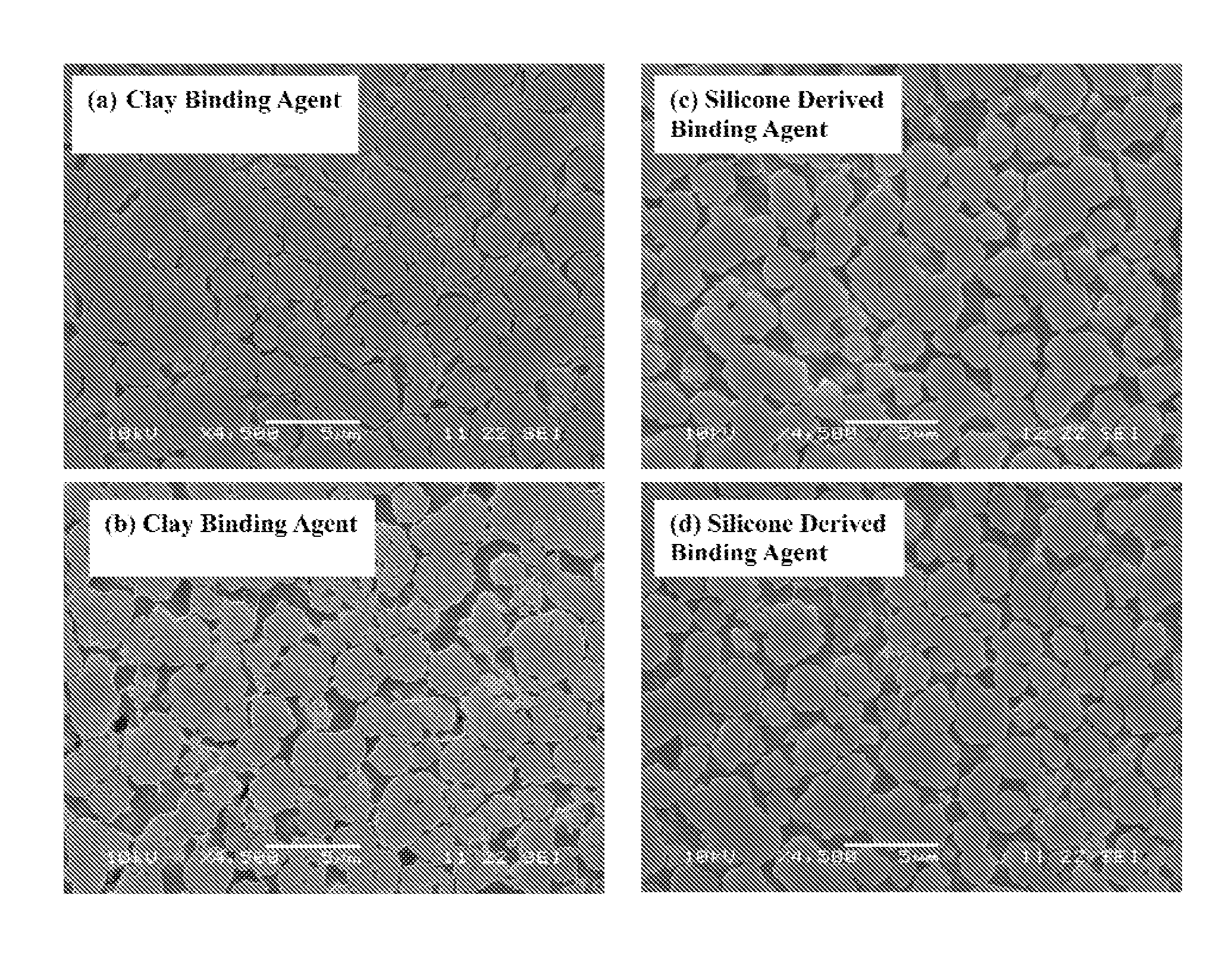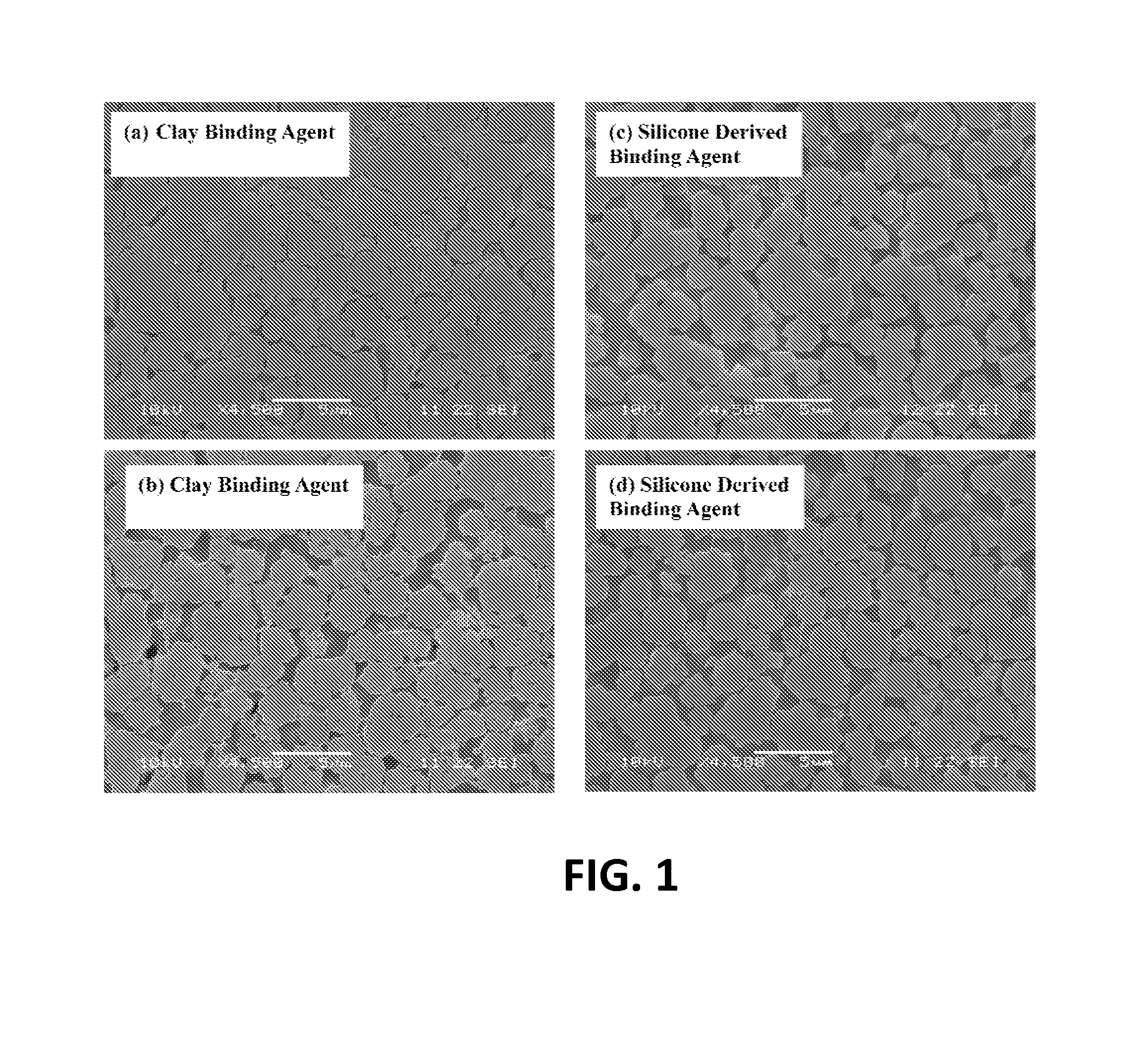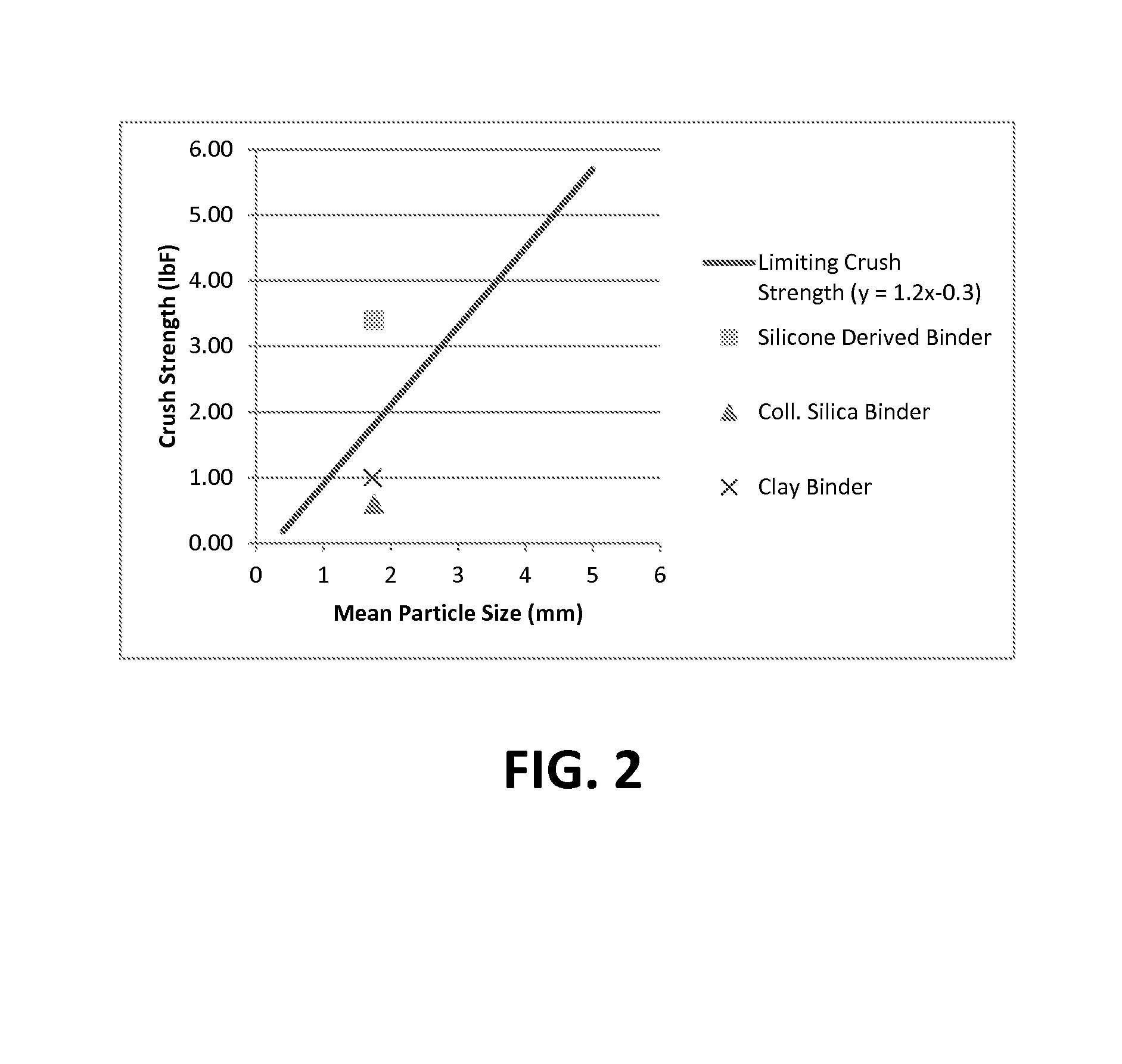Novel adsorbent compositions
a technology of adsorbent composition and composition, which is applied in the direction of physical/chemical process catalyst, separation process, and other chemical processes, can solve the problems of adverse effect on the final pore structure, reduced power consumption and/or product recovery, and low capital cost, and achieve superior pore structure and connectivity, superior agglomeration adsorbent composition, and high crush strength value
- Summary
- Abstract
- Description
- Claims
- Application Information
AI Technical Summary
Benefits of technology
Problems solved by technology
Method used
Image
Examples
example 1
NaKLSX Zeolite Adsorbent with 7 Wt % Silicone-Derived Binding Agent
[0054]2000.0 g of zeolite NaKLSX powder on a dry weight basis (2684.6 g wet weight) were mixed with 60 g F4M Methocel in a Hobart mixer for 10 minutes. Thereafter with the mixer still agitating, 467.5 g of IE-2404 (a silicone containing silicone resin emulsion from Dow Corning) was pumped in at rate of 15 ml / min. After the IE-2404 addition was completed, mixing was continued for an additional 1 hour, before the now mixed products were transferred to a Nauta mixer having internal volume ˜1 ft3 and agitated therein at a speed of 9 rpm. The Nauta mixing was continued, while gradually adding deionized water to form beads having porosity in the range 35-40%, as measured after calcination using a Micromeritics Autopore IV Hg porosimeter. At the end of this mixing time, beads including those in the target 12×16 mesh size range had formed. The product beads were air dried overnight prior to calcination using a shallow tray m...
example a (comparative)
NaKLSX Zeolite Adsorbent with 7 Wt % Colloidal Silica Binding Agent
[0055]2000.0 g of zeolite NaKLSX powder on a dry weight basis (2684.6 g wet weight) were mixed with 60 g F4M Methocel in a Hobart mixer for 10 minutes. Thereafter with the mixer still agitating, 376.4 g of Ludox HS-40 colloidal silica (from Dow Chemical) was pumped in at a rate of 17 ml / min. After the colloidal silica addition was completed, mixing was continued for an additional 1 hour, before the now mixed products were transferred to a Nauta mixer having internal volume ˜1 ft3 and agitated therein at a speed of 9 rpm. The Nauta mixing was continued, while gradually adding deionized water to form beads having porosity in the range 35-40%, as measured after calcination using a Micromeritics Autopore IV Hg porosimeter. At the end of this mixing time, beads including those in the target 12×16 mesh size range had formed. The product beads were air dried overnight prior to calcination using the shallow tray method at te...
example 2
LiLSX Zeolite Adsorbent with 5 wt % Silicone-Derived Binding Agent, Laboratory Preparation with Methocel F4M
[0059]59.90 lbs. of zeolite NaKLSX powder on a dry weight basis (76.45 lbs. wet weight) were mixed with 0.60 lbs. F4M Methocel in a Littleford LS-150 plow mixer for 1 minute. Thereafter with the mixer still agitating, 9.8 lbs of IE-2404 (a silicone containing silicone resin emulsion from Dow Corning) was pumped in at rate of 1 lb / min. After the IE-2404 addition was completed, 11.0 lbs of water was added at a rate of 1 lb / min under constant stirring in the plow mixer. At the end of the water addition, plow mixing was continued for an additional 5 minutes. The plow mixed powder product labeled hereinafter “the formulation” was transferred to a tilted rotating drum mixer having internal working volume of ˜75 L and agitated therein at a speed of 24 rpm. Mixing of the formulation was continued while adding deionized water gradually to form beads. A recycling operation was performed...
PUM
| Property | Measurement | Unit |
|---|---|---|
| median pore diameter | aaaaa | aaaaa |
| particle size | aaaaa | aaaaa |
| mean particle size | aaaaa | aaaaa |
Abstract
Description
Claims
Application Information
 Login to View More
Login to View More - R&D
- Intellectual Property
- Life Sciences
- Materials
- Tech Scout
- Unparalleled Data Quality
- Higher Quality Content
- 60% Fewer Hallucinations
Browse by: Latest US Patents, China's latest patents, Technical Efficacy Thesaurus, Application Domain, Technology Topic, Popular Technical Reports.
© 2025 PatSnap. All rights reserved.Legal|Privacy policy|Modern Slavery Act Transparency Statement|Sitemap|About US| Contact US: help@patsnap.com



